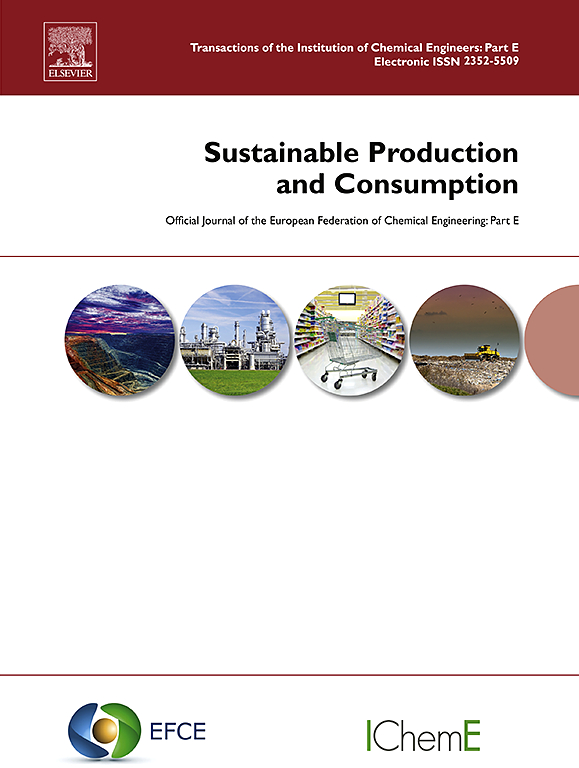国际贸易引起的二氧化碳转移和驱动因素的全球峰值:从多个角度看
IF 10.9
1区 环境科学与生态学
Q1 ENVIRONMENTAL STUDIES
引用次数: 0
摘要
贸易导致的二氧化碳转移增加了全球碳排放的压力,并可能引发碳泄漏。了解这些转移的峰值状态对于加快全球封顶进程至关重要。本研究调查了 2000-2019 年间全球生产(转入二氧化碳,TIC)、中间加工(转出二氧化碳,TRC)和消费(转出二氧化碳,TOC)的二氧化碳转移峰值,并确定了主要驱动因素。我们的研究结果表明,二氧化碳转移量持续增长,尤其是 TRC(47.8%)。与此同时,我们还发现了一些明显的模式,在全球南部,TIC 和 TRC 在上升,而在全球北部,TIC 和 TRC 在下降。总有机碳在北方和南方都呈现出增加的模式。此外,研究结果表明,少数经济体的二氧化碳排放量已经达到峰值,其中三个经济体的 TIC 达到峰值,六个经济体的 TRC 达到峰值,两个经济体的 TOC 达到峰值。进一步分析表明,生产结构将是减缓转移的主要驱动力。此外,电力和非电力部门的碳强度也有助于减缓。电力行业的碳强度在 2014-2019 年间对中国的总碳汇产生了抑制作用(-850 万吨),就是很好的例证。相反,国际最终贸易规模推动了非峰值经济体的二氧化碳转移。建议在生产技术和环境成本方面开展国际合作,以促进国际贸易引起的二氧化碳转移达到峰值。这些发现对于在生产、加工和消费各阶段对贸易引起的二氧化碳转移进行全球协同治理以及减少碳泄漏都很有价值。本文章由计算机程序翻译,如有差异,请以英文原文为准。
Global peak of international trade-induced CO2 transfers and drivers: From multiple perspectives
Trade-induced CO2 transfers have increased the pressure on global carbon emission and may trigger carbon leakage. Understanding the peak status of these transfers is crucial for expediting global peaking process. This study investigates global CO2 transfer peaks across production (transfers-in CO2, TIC), intermediate processing (transmission CO2, TRC), and consumption (transfers-out CO2, TOC) during 2000–2019, and identifies main drivers. Our findings reveal a sustained increase in CO2 transfers, particularly TRC (47.8 %). Meanwhile, discernible patterns emerge, with TIC and TRC rising in Global South but declining in Global North. TOC demonstrates a pattern marked by augmentation in both North and South. Furthermore, the results indicate that a minority of economies have already reached their peak in CO2 transfers, with three economies peaking in TIC, six peaking in TRC, and two peaking in TOC. Further analysis reveals that production structure would be the primary driver of mitigating transfers. Additionally, carbon intensity in both power and non-power sectors can also contribute to mitigation. This is exemplified by the dampening effect exerted by carbon intensity of power sector on China's TIC during 2014–2019 (−8.5 Mt). Conversely, the international final trade scale propels CO2 transfers in non-peaked economies. International cooperation in production technology and environmental cost are recommended to facilitate the peak of international trade-induced CO2 transfers. These findings are valuable for global synergistic governance of trade-induced CO2 transfers across production, processing, and consumption stages, as well as for mitigating carbon leakage.
求助全文
通过发布文献求助,成功后即可免费获取论文全文。
去求助
来源期刊

Sustainable Production and Consumption
Environmental Science-Environmental Engineering
CiteScore
17.40
自引率
7.40%
发文量
389
审稿时长
13 days
期刊介绍:
Sustainable production and consumption refers to the production and utilization of goods and services in a way that benefits society, is economically viable, and has minimal environmental impact throughout its entire lifespan. Our journal is dedicated to publishing top-notch interdisciplinary research and practical studies in this emerging field. We take a distinctive approach by examining the interplay between technology, consumption patterns, and policy to identify sustainable solutions for both production and consumption systems.
 求助内容:
求助内容: 应助结果提醒方式:
应助结果提醒方式:


